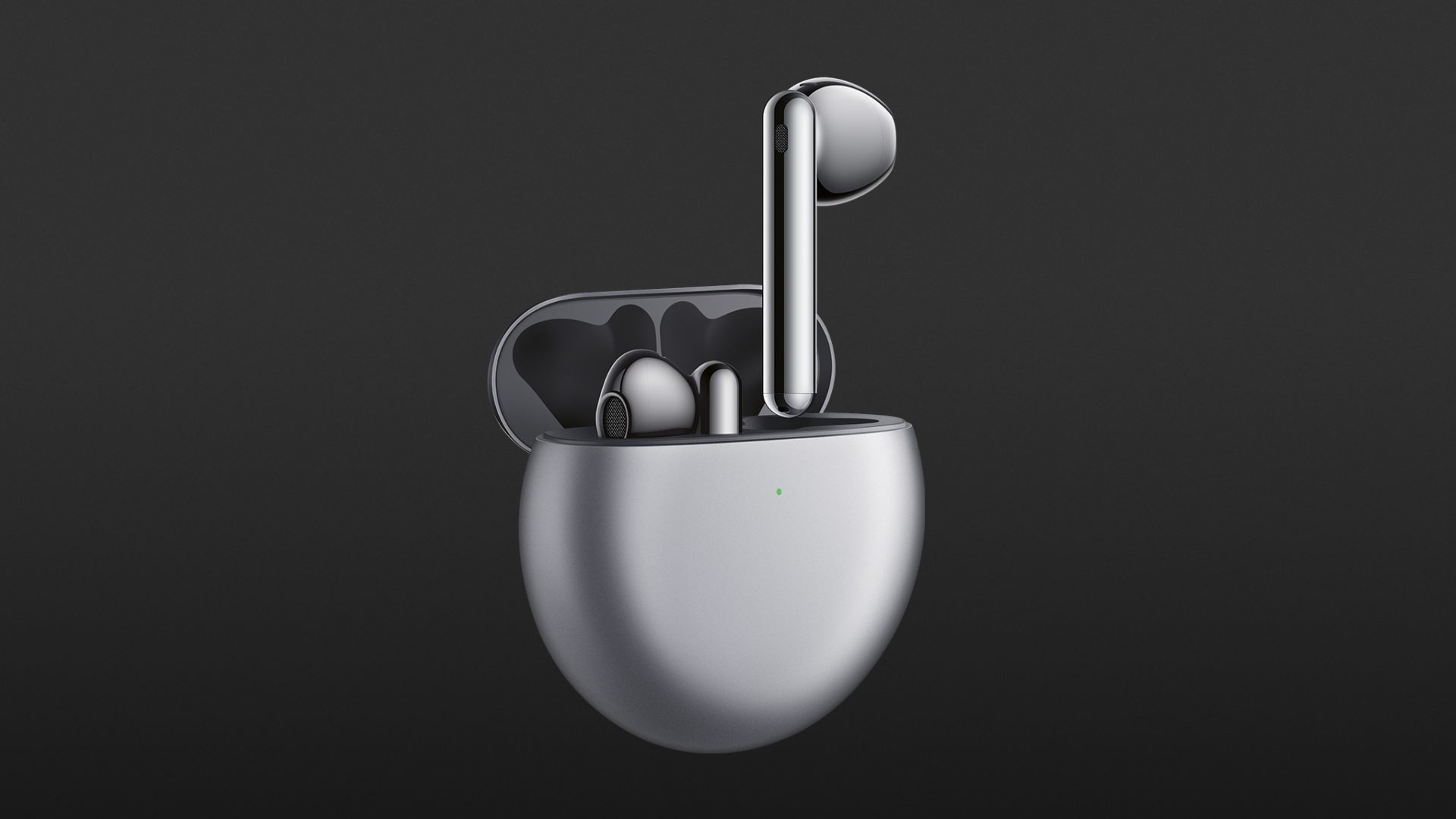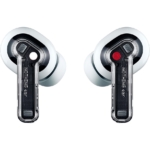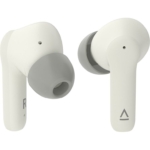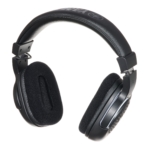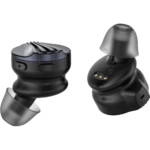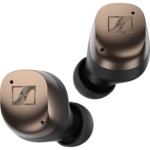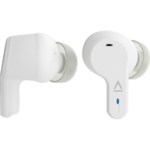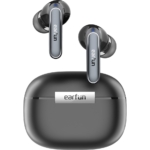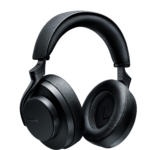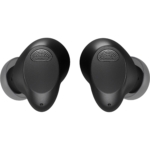The Huawei FreeBuds 4, which are IPX4 splash-proof, left us with mixed feelings. Slim and lightweight, they sit loosely and comfortably in the ear – but this is often too loose for sporting activities. They deliver a passable but not outstanding sound with limited battery power. The remote functions could be more complete and the equaliser in the app could allow more frequency manipulation. Without a proper seal, the FreeBuds 4 fail to give the ANC a good foundation for effective noise reduction, so its effectiveness is also poor. On the positive side, Multipoint and the “AI-Life” app stand out, as this now runs fully under iOS, yet does not offer all functions such as a low-latency mode, which can only be used with a cutting-edge Huawei device with HarmonyOS, which we, unfortunately, could not check for lack of a suitable test smartphone. Ultimately, a trade-off must be made between high wearing comfort with a loose fit and great sound development with a tight fit, taking into account the appropriate ear shape.
The successors to the Huawei FreeBuds 3 are called FreeBuds 4. Like their predecessors, they rely on an “open-fit design”, i.e. an ear fit without silicone attachments – also called “Ear Buds”. Despite this airy design, which the first noise barrier does not have due to the design because of a sealed ear canal, they want to ensure peace with a two-stage active noise cancelling.
In the box
The box contains the FreeBuds 4 and the round charging case in the colour Silver Frost. As an alternative to this glossy version, Huawei also offers them in Arctic White. There are also all the usual documentation materials and a charging cable from USB-A to USB-C.
The version tested here features a case that can be charged wirelessly via Qi, costs 20 euros more than the regular price of 149 euros and is only available in Silver Frost.
Technology
Opening the very slim and pocket-friendly case starts the pairing process, which quickly and easily established a connection with my iOS device. If you leave the Ear Buds in the case for the time being and press the very unobtrusive button on the left side, another connection is established with a second player, and you can switch seamlessly between these sources as you wish.
The range of the Bluetooth 5.2 connection is over 20 metres in open space, but in buildings, it starts to stutter at less than 10 metres through walls. AAC and SBC are used as codecs. High-resolution codecs such as aptX HD are not available here.
Comfort
When the FreeBuds 4 are in your ear, they fit either well and tightly or less well and loosely, with all the gradations in between, according to the user’s ear shape. The advantage of this design is the airy fit, which allows all-day wear without feeling pressured or sealed off, and almost makes you forget about the technology in your ear. Huawei explains the disadvantage of the design for switchable ANC in the small print of its website, from which I quote here: “The closer the earphones fit, the greater the effect of noise suppression. Background noise is suppressed better with smaller ear openings than with larger ones. For maximum noise cancellation, the earphones should fit as snugly as possible in the ear.”
Software
The good news is that the AI-Life app has been adapted for iOS to the extent that it now also works fully outside the Huawei world, right down to the update function for the FreeBuds 4. In addition, an – albeit very poorly equipped – EQ with three pre-sets have been included, via which either bass or treble can be boosted a little. That is not much, but at least it is a start. Otherwise, the app provides the usual information about the charging status of the Ear Buds and the charging case. In addition, there is a search aid to make it easier to find buds lost down the back of the sofa, which makes a loud sound. There are a few settings for the remote gestures and a switch for wear detection – this stops the player when a bud is removed from the ear and continues playing when it is back in place. There are also two modes of noise reduction – one of which is called “Cosy” and is intended for quiet environments. I couldn’t make sense of it either – when I read the description or when I used it: Why do you need active noise cancellation in a quiet environment? The second mode is called “Balanced” and is intended for noisy environments. The preselection can be switched either in the app or with a long press on the left or right earpiece.
Remote
There is a hold, double-tap and swipe gesture for control, the latter requiring a little dexterity so that you don’t brush the headphones out of your ears when adjusting the volume. For the double-tap, a function such as start/stop, track skip, digital assistant or nothing at all can be assigned to the left and right ear buds in the app. A long hold is used for call rejection as well as ANC control and cannot be changed.
Sound
The fact that the FreeBuds 4 do not seal off my ear canal completely is noticeable from the very first sounds of Monolink: The 14.3 mm dynamic drivers of the FreeBuds 4 leave the bass somewhat unsaturated, whereas the mid-range and treble sound pleasantly fresh. If I immediately use the bass boost from the app, I can tell: Better bass and thus a more natural impression of the overall sound, which is also quite penetrable and builds up a nice crisp, crystalline structure, especially in the treble. However, the sound becomes increasingly ineffective as the music becomes more complex, i.e. classical or more elaborate pop music. The current Moby album doesn’t fill up the space in your head and remains pale and listless. Rockier performances by Noel Gallagher lack power in the mids, which can’t really hold their own against snarly highs, thinning out the sound. The FreeBuds 4 still seem to feel most comfortable with electronic music.
Noise cancelling
If I switched on the active noise cancellation, I immediately noticed – as is so often the case – a compression and stronger emphasis of the mids, which tends to improve the overall impression because it seems somewhat more voluminous and full-bodied. But it is also noticeable that only a few low frequencies seem to be reduced; overall, the performance of the ANC is low. Since these EarBuds do not seal the ear canal properly, this is not surprising. Apart from a slight reduction, not much happens: the background noise increases, the ambient noise – whether on the street or in front of a TV – does not decrease. With this permeability, it is not surprising that there is no transparency mode.
Calls and runtime
When it comes to telephony, the FreeBuds 4 rely on a fairly strong filtering of ambient noise. However, the caller’s voice remains easily understandable and it was hardly noticeable to the other party that we are talking through the FreeBuds.
However, after less than four hours of mixed use (ANC sometimes on, sometimes off), we were no longer able to listen to music and podcasts. The buds can be recharged just over four times with the case and thus extended by an additional 16 hours of runtime. Thanks to the quick-charge function, the battery is charged within 15 minutes for a playback time of 2.5 hours without ANC.
Technical specifications
- Ear couplingEarBuds
- Typeclosed
- Transducer principledynamic
- Weight without cable4.1 g each, Case approx. 38 g
What's in the box
- USB-C charging cable
- Charging case
Special features
- in Silver Frost und Arctic White erhältlich
- BT-Codecs: SBC, AAC
- BT-Version: 5.2












